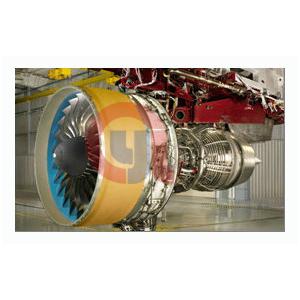
Add to Cart
F-12 aramid fiber is one of the “aromatic polyamide” fibers which are used widely in aviation, aerospace, electronic, airship, personal protection and sports product.
Aramid fiber's original use was for car tire reinforcement, but in transport, the fibers are used as a replacement for asbestos – for example in brake linings. Probably the most widely known application is in body armor, and other protective uses include fireproof suits for firefighters, helmets, and gloves.
Their high strength/weight ratio makes them attractive for use as reinforcing (for example in composite materials particularly where flexing tolerance is important, such as aircraft wings). In construction, we have fiber-reinforced concrete and thermoplastic pipes. Corrosion is a major problem for expensive undersea pipelines in the oil industry, and thermoplastic pipe technology was developed to prolong pipeline life and reduce maintenance costs.
Their low stretch properties (typically 3.5% at break), high strength and abrasion resistance make aramid fibers ideal for ropes and cables, and they are even used for mooring ships.
In the sporting arena, bowstrings, tennis racquet strings, hockey sticks, skis and running shoes are some of the application areas for these outstanding fibers, with sailors enjoying the benefits of aramid-reinforced hulls, aramid lines and aramid fiber wear-patches on their elbows, knees, and rears!
Chemical and physical property of F-12 Aramid fiber
| Density (g/cm3) | 1.43±0.1 | Limited Oxygen index (LOI) | 35 |
| Saturated moisture absorption (%) | ≤3.0 | Heat expansion index (10-6/K | ±1 |
| Glass transition temperature (℃) | 264 | Decomposition temperature (℃) | |
| High temperature performance | 200℃, strength lowered by 25% for 100 hours | Low temperature performance | Strength maintains the same at -194℃ |
| Dielectric constant | 3.4 (23℃) | Dielectric loss | 0.00645 (23℃) |
| Creep property | 60% breaking load, 300 days, creeping increment 0.131% | ||
Mechanical property of F-12 Aramid fiber
| Model | 23T | 44T | 44THM | 63T | 100T | 130T | 200T |
| Line density(tex) | 23±2 | 44±3 | 44±3 | 63±4 | 100±5 | 130±5 | 200±5 |
| Impregnation tensile strength (GPa) | ≥4.3 | ≥4.3 | ≥4.0 | ≥4.2 | ≥4.2 | ≥4.2 | ≥4.2 |
| Impregnation elastic module (GPa) | ≥120 | ≥120 | ≥145 | ≥120 | ≥120 | ≥120 | ≥120 |
| Elongation (%) | ≥2.6 | ||||||